Our Disappearing Coastlines: The Cost of Extreme Weather


By Scott Huntington
The Hamptons, South Beach, San Diego and Nantucket are all gorgeous shore communities that provide vacationers with a needed respite and others with a warming home. Sadly, these beacons of vibrancy, trade and culture are becoming a dying breed. Their predator is climate change, and it is relentless and costly. Catastrophic storms, displaced families and hefty taxpayer clean-up programs litter the trail of the disappearing shoreline.
The cost of extreme weather
Coastal communities are hit hardest by flooding. Higher temperatures are melting the earth’s ice sheets and causing the ocean’s water to expand onto land. Coupled with increases in the likelihood of extreme weather, which often bring rainfall, water is quickly becoming one of our greatest threats. With nearly 25 million people living by a shore in the United States, it’s important to understand how pervasive flooding can be.
Increased flooding is dispelling myths, like the notions that flooding isn’t common, or that it only occurs after heavy rains and only happens in low-lying areas. In fact, 90 percent of all U.S. natural disasters involve some sort of flooding.
And flooding isn't the only problem. Take the abnormally large blizzard that hit New York City this past January. Three people died during while shoveling snow, and the city was left with two feet of frozen water. That’s a lot of cleanup — and a lot of money needed to repair not only homes, but also businesses, roads and habitats.
Rising sea temperatures and marine life
Changing currents and rising sea temperatures are causing significant disruptions. While some may claim the death of distant animals may not impact them personally, it’s important to remember that the ocean also absorbs carbon dioxide from the air — which is something we all need for it to do.
While the ocean has dutifully cleaned up the carbon dioxide we produce and survived our industrial revolution, we have repaid it with lowering pH levels. This creates a more acidic habitat that adversely affects coral, mollusks and plankton, to name a few. While the ocean absorbing our carbon dioxide tab has benefited us in the short term, we may soon be paying it back with interest.
The next step
While many can agree on taking some sort of action to combat the costs of climate change, the answer of how to pay for it is not as easy to settle.
When world leaders are debating climate change in regard to responsibility, it should come as no surprise that there is a contentious debate: Should homeowners who decide to purchase land in higher-risk areas be bailed out by all taxpayers? Are companies that pump out greenhouse gases responsible? Or maybe a tax will be added to products depending on how far they had to travel to get on a store shelf?
Finding a consensus is going to be difficult, and coastal flooding is continuing to increase. Hopefully, the impending deadline from nature will encourage us to work together, but just in case, it might be a good time to sell any ocean property. Weather events can be fairly unpredictable, though it’s certain that climate change is impacting the coasts.
Image credit: Pexels
Scott Huntington is a writer and blogger. Follow him on Twitter @SMHuntington.
U.S. Companies Tackle Hydrogen Economy Bottleneck
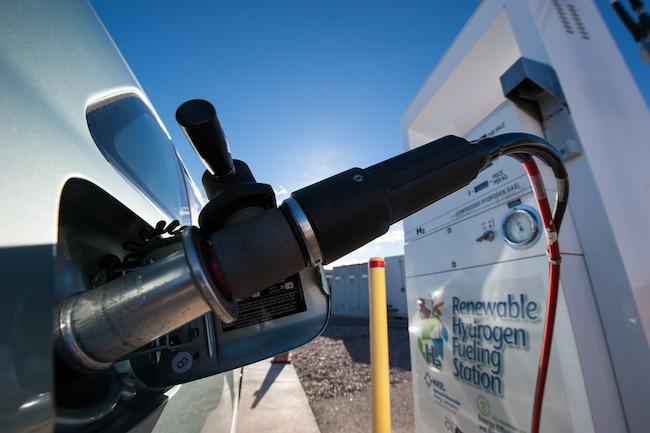

The U.S Department of Energy tapped a group of high-tech companies for $35 million in funding to help the hydrogen economy get past a classic chicken-and-egg dilemma: Why build hydrogen fueling stations if nobody is buying hydrogen-fueled cars? And why buy a hydrogen car if there's nowhere to fuel up?
The goal of the program is to enable hydrogen to be transported and stored using the same infrastructure deployed by the petroleum industry. That sounds simple enough, but the devil is in the details.
Hydrogen chicken, meet egg
When used in a fuel cell, hydrogen is a zero-emission fuel. It produces an electrical current by reacting with oxygen. The only byproduct is water.
Loosely speaking, hydrogen stores energy like a battery. The big difference from a consumer perspective is that batteries need to be charged before use, and that takes time. In contrast, hydrogen fuel cells create an electrical current on-the-go.
A hydrogen fuel cell electric vehicle can fuel up in a matter of minutes, just like a gasoline vehicle.
That's an attractive advantage, but the problem is that transporting, storing and distributing hydrogen gas is expensive.
The lack of fueling stations has put a check on demand for hydrogen-powered vehicles. With few vehicles on the road, investors are skittish about pumping money into the fueling infrastructure. For now, battery EVs are tops in the emerging zero-emission mobility market.
The cost factor is also inhibiting the introduction of stationary fuel cells for buildings.
The logjam is beginning to break in the logistics sector, because time and space are at a premium in warehouse operations. Hydrogen fuel cell fork lifts provide a significant savings over their battery-powered cousins, which require more time and space for recharging.
Another area to watch is long-distance hauling. Toyota recently announced a pilot project for a hydrogen fuel cell semi truck. And a startup company called Nikola has paired with trucking company Ryder and the manufacturer Fitzgerald to introduce the Nikola One hydrogen truck.
Nikola has an ambitious business plan that includes a vast network of fueling stations, and the hydrogen will be sourced using renewable energy. (Fossil natural gas is still the primary source for hydrogen.)
An ammonia-fueled turbo boost for the hydrogen economy
Companies like Toyota and Nikola are the exceptions that prove the rule: The fact is that the need for zero-emission vehicles is urgent, and the pace of development is far too slow.
That's where the Department of Energy comes in. The new round of funding attacks the hydrogen bottleneck from a unique angle. Rather than focusing strictly on more efficient (and less costly) ways to compress hydrogen gas, the agency is looking for systems that use ammonia as a platform.
If that sounds somewhat odd, consider that ammonia is composed of hydrogen and nitrogen. The basic idea is that ammonia can pass along the existing storage and transportation infrastructure. Once it reaches a point of use, the hydrogen can be separated out.
One main obstacle is that existing separation methods are expensive and energy intensive. The new funding will help several tech companies work on that problem, including the Bettergy Corp. and SAFCell. Both companies are developing different ways to whittle the complex process down into one step or one device.
A team from the University of South Carolina is developing an energy-efficient reactor with a low-cost catalyst that will separate hydrogen from ammonia as it decomposes.
Teams from Materials and Systems Research, Inc. and the University of Delaware will take a different approach, by developing a fuel cell that can generate electricity directly from ammonia.
Fuel from water and air
Another hurdle is to reduce the cost and impact of producing ammonia itself. The company FuelCell Energy, Inc. will work on that with a reversible, energy-efficient system that can generate electricity from ammonia, or produce ammonia from nitrogen and water.
Storagenergy Technologies, Inc. is also working on a cell-based system for producing ammonia from water and nitrogen.
And the University of Minnesota Twin Cities is working on a way to increase the efficiency of the conventional Haber-Bosch system for generating ammonia through a reaction between hydrogen gas and airborne nitrogen.
A company called Giner, Inc. is coming at the problem from a more specific angle. It is developing new, more efficient materials for catalysts that are needed to produce ammonia from nitrogen.
The renewable energy factor
The funding is also focused on ammonia production systems that account for the intermittent nature of renewable energy. In effect, the goal is to use synthetic ammonia as a storage platform for wind or solar power.
RTI International is reworking a conventional ammonia production process, so that it can start up and gear down efficiently depending on the availability of renewable energy sources.
The West Virginia University Research Corp. is also working on a renewables-friendly method that increases the efficiency of the Haber-Bosch process.
Renewable energy also factors into a project of Wichita State University that involves producing ammonia with airborne nitrogen. The team will tweak the system to accommodate renewables, resulting in a more efficient and less costly ammonia production method.
More and better sustainable fuels
Aside from accelerating the hydrogen economy, the $35 million will also be split among three other sustainable fuel projects.
Teams from the Gas Technology Institute and Sustainable Innovations, Inc. are working on different systems for producing dimethyl ether as a substitute for diesel fuel, using practically nothing but carbon dioxide, hydrogen and electricity. Potentially, both the hydrogen and electricity could be sustainably sourced.
Opus 12, Inc. is looking to re-configure a hydrogen production system and make it convert carbon dioxide directly into ethanol.
The ARPA-E factor
All together, the new funding round packs a lot of power into 16 different projects. The funding comes under the umbrella of ARPA-E, the Energy Department's high-tech funding division.
ARPA-E was established in the closing years of the George W. Bush administration to provide support for high-risk, high-payoff R&D in the energy field. The aim is to bring the research up to the point where it begins to attract private-sector investment.
It wasn't funded, though, until President Barack Obama took office in 2009. The result has been a smashing success.
In its first five years, the agency pumped $95 million into promising R&D projects, which eventually attracted more than $625 million in private-sector funding.
Obama will leave office in just a few weeks, and ARPA-E could be in for another rough ride under the incoming Trump administration.
That's because President-elect Donald Trump has tapped former Texas Gov. Rick Perry to head the Energy Department. Known for his denial of climate science and an appearance on Season 23 of "Dancing with the Stars," Perry seems to be a startlingly unqualified choice to head the Department of Energy.
A primary mission of the DOE is the use, handling, storage and disposition of nuclear materials, with roots in the World War II era Manhattan project. The agency was established by Act of Congress in 1977 as a response to the OPEC oil crisis, with the aim of diversifying and securing the nation's energy supply.
On the other hand, Perry's lack of basic qualifiers is consistent with most of the incoming Trump cabinet. It appears that the cabinet will act as a lens that focuses on the president-elect as the only person qualified to make cabinet-level decisions.
That will provide Trump with the flexibility to generate policies based on his personal preferences, regardless of prior norms.
That could lead to some interesting situations, especially regarding the Energy Department. Federal agencies are established by Congress and guided by missions, rules and regulations that are not subject to change without running through a time consuming process.
Trump appears insistent on turning back the clock back, at the expense of the Energy Department.
Whether Congress allows that to happen remains to be seen.
Image (screenshot): via U.S. Department of Energy.
Gov. Brown's Rallying Call for the Climate: 'We'll Launch Our Own Damn Satellites'
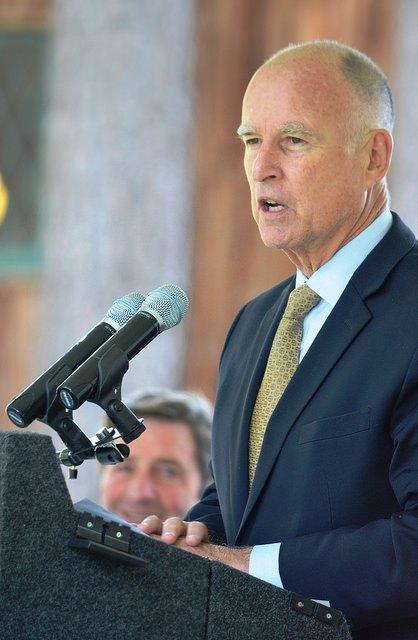

Official meetings about science and climate change aren’t normally where you expect to hear rousing speeches of defiance. And especially not when they come from a governor.
But then again, California Gov. Jerry Brown isn’t always known for following the federal party line. His reference to Donald Trump as a “fraud” at the Democratic National Convention is among the most caustic discredits the president-elect has received of late.
But Brown’s most recent declaration -- "If Trump turns off the satellites, California will launch its own damn satellite” -- hit a chord with the environmental lobby. This, of course, refers to Trump's threats to defund NASA's Earth Science division, which includes a network of satellites that track climate change. In his speech to scientists of the American Geophysical Union, Brown also vowed to ensure that California kept up with the environmental data despite federal policy.
And as to news that the new federal government would go after cities and entities that bucked federal policies (as Los Angeles and Chicago vowed to do when it came to Trump’s plans to expel 3 million immigrants), Brown had a message for Washington:
“We've got the scientists; we've got the lawyers; and we're ready to fight.” He also had a message for Trump’s appointee for energy, Rick Perry: "Rick, I got some news for you: California is growing a hell of a lot faster than Texas. And we've got more sun than you have oil.”
Brown's rousing speech may have seemed out of character at this particular podium, but it was further proof that the first 100 days of presidency may not be as easy as Mr. Trump is expecting.
There are already speculations that some Republicans in Congress may not go along with all of Trump's agenda. A few congressional hearings, some lengthy closed-door meetings and states, like California, that are willing to battle issues out in court may impart the message that money isn't the only issue that drives business. States -- all 50 of them -- have sovereignty as well.
But Brown's speech also reflects a growing nervousness in the scientific community about the implications of an administration that clearly gains from ignoring climate change and limiting information.
Researchers from across the nation are now stepping up efforts to save vast amounts of environmental data they fear may disappear once Trump comes into power. They are reportedly working with the University of Toronto's "guerilla archiving" project in an effort to squirrel away data that would help scientists track a global warming.
The Canadian-based university is also becoming the new hub for a satellite office of the Internet Archive. The organization archives about 30 million websites a week and maintains that its primary goal is to keep its "materials safe, private and perpetually accessible" so that "no-one will ever be able to change the past."
Trump has previously suggested that some areas of the Internet should be blocked from public access to foil terrorists. The idea sent shockwaves through the scientific community and mobilized efforts to ensure that archiving projects that were originally based in the U.S. have alternative "homes" for secondary access.
It may be too early to tell the outcome of Brown's call for activism or whether the Trump administration might actually become a threat to efforts to stop global warming. But it is reassuring to know that a change of administration in Washington won't signal apathy when it comes to stopping the planet's greatest environmental threat.
Image credit: Flickr/U.S. Army Corps of Engineers
Crude Oil Leak Fouls Key Waterway Near Dakota Pipeline Route


Until early this month, the question of whether the Dakota Access Pipeline should cross the Missouri River was centered on issues of fairness: Was it appropriate – and even legal – to deny a key route for the crude oil pipeline if the developer had already obtained a permit? Had the U.S. Army Corps of Engineers really considered the concerns of the Standing Rock Sioux and other Native Americans living along the route? And do those who oppose a federally permitted pipeline have the right to safety when protesting an action they feel will jeopardize their livelihood?
But on Dec. 5, as water protectors celebrated the federal government’s decision to deny Energy Transfer Partners a permit to drill under the Missouri River, the debate entered a new dimension. The question was no longer just one of equity or justice. It was now a concern about environmental degradation.
For the Standing Rock Sioux Tribe, the issue with DAPL has always been about ecological risk. Prophesies of a “black snake” that sweeps across Native lands, destroying the earth and poisoning the waters, are intrinsic to the Lakota and Hopi cultures. Those legends also speak to the very reason that the Native American water protectors have been so successful in galvanizing support to protect their key water source from crude oil transports. Not all Americans believe in prophesies and legends, but most recognize the outcome of the 'black snake' message: climate change.
Over the past weeks, while water protectors and the Morton County Sheriff’s Office faced off in confrontation, a new threat gathered near the banks of a small creek some 150 miles northwest of the DAPL protests: a 176,000 gallon crude oil leak that went undetected by pipeline owners.
The Belle Fourche Pipeline leak was discovered by a local landowner last week. By the time the pipeline company responded, some 130,000 gallons had seeped into the Little Missouri River.
A tributary of the massive Missouri River, the Little Missouri feeds both North Dakota’s vital grasslands and the Theodore Roosevelt National Park before joining up with the Missouri River in the northern part of the state. From there, it flows into other key water sources, like the Yellowstone River and Fort Peck Lake, a major reservoir in Montana. The Little Missouri may sound small in name, but it plays an indispensable role in America’s vital watersheds.
But what is really alarming about last week’s happenstance discovery is that crude oil leaks like this are far from abnormal.
True Pipelines, which owns the Belle Fourche, is also the parent company of Bridger Pipeline. The latter company was forced to shut down its Poplar route due to an undetected leak under the Yellowstone River in January 2015. The Environmental Protection Agency hasn’t given a specific tally of the leak (somewhere between 300 and 1,200 gallons), but the cleanup was reportedly harrowing. The lack of specific knowledge about what crude actually does in melting ice prolonged and complicated the recovery process.
The water protectors may now have the proof they need to oppose a Missouri River crossing by the DAPL pipeline, but it’s a hollow win. Less than a week after the leak was detected in a nearby leak, another stream of oil emanating from Belle Fourche was found seeping across solid land. So far, almost 200,000 gallons have tainted water sources and adjoining properties. For the Belle Fourche Pipeline and its parent company, it’s far from their first leak in America’s heartland.
But even with all of this history to point to, blocking another river crossing in court may be still be tough.
President-elect Trump’s recent pick of Rick Perry as energy secretary brings, as with many of his other appointments, its own controversies. Perry, who would be expected to oversee energy production and regulation issues, sits on the board of Energy Transfer Partners, the company behind DAPL.
Perry has also questioned whether climate change exists. And he would be in the position of making decisions that could directly impact Native American communities near and in the path of proposed crude oil pipelines.
While it may be unlikely that the court would reinstate a permit for DAPL to cross the Missouri at its current junction, the question of how to protect the country’s vital watersheds from construction, especially in light of Trump's support for a prospective energy secretary who has received millions in donations from the oil industry, is still an open debate.
Image credit: Flickr/epape
Community Compost Thrives in San Diego
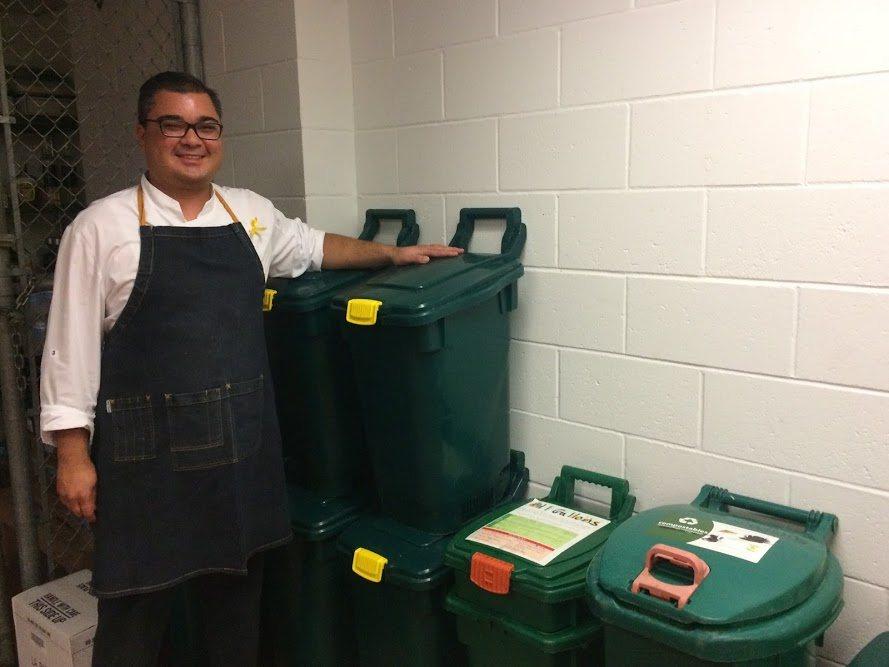

Fresh compost is a beautiful thing. It's the color of ground coffee and the smell of earth after a fresh rain. This soil supplement is gold for gardeners looking for thriving veggie plants. And it all comes from waste -- things like carrot tops, cantaloupe rinds, stale bread -- that most restaurant staff and diners would toss in the trash without a second thought.
Food2Soil, a micro-enterprise founded and supported by Inika Small Earth, exists to strengthen these local streams and "resource the local food web," Sarah Boltwala-Mesina, executive director of Inika Small Earth, explained.
Food2Soil allows community gardeners to benefit from the food waste streams of local restaurants. Here's how it works:
Food2Soil contracts with a local restaurant to pick up buckets of pre-consumer food waste like kitchen scraps (no meat or dairy here). A so-called 'compost technician' picks up the buckets and delivers them to a local community garden where s/he turns the compost, monitors the temperature, and balances green and brown waste to ensure a beautiful, high-quality soil for the community gardeners to use in their planting boxes.
Boltwala-Mesina told TriplePundit she prefers to think of these technicians as "soil growers" rather than "waste pickers." And her goal is to "bring professionalism to the world of composting and community gardens."
The group focuses on pre-consumer kitchen waste in order to keep the compost quality extremely high. "We pick the waste streams that have value for the community and let the others go," Boltwala-Mesina explained.
This careful attention to inputs is wise for any rookie composter who hopes to create usable soil. While composting can be as straightforward as piling some yard waste in a corner of the lawn, it's a bit more difficult to produce the soil amendment that gardeners and famers crave.
Underneath the surface of your average active compost pile, the organic and chemical reactions are quite complex. As the U.S. Department of Agriculture explains: "An incredible diversity of organisms make up the soil food web. They range in size from the tiniest one-celled bacteria, algae, fungi, and protozoa, to the more complex nematodes and micro-arthropods, to the visible earthworms, insects, small vertebrates, and plants." Setting the right temperature and ratio of brown to green waste are key to getting the right mix of organisms to thrive.
Thus, Food2Soil's soil growers rightly take their jobs extremely seriously. We spoke to one, Elicia, who has a master composter certification and oversees composting for the San Diego Zoo when she's not working with Food2Soil. She calls Food2Soil "super well-run" and loves the community engagement aspect of the organization's mission.
Indeed community value is at the core of Food2Soil's raison d'etre. The group wants to demonstrate that composting at the ultra-local level is a vibrant model that other groups around the country can emulate. Its goal is most assuredly not to replace commercial composting initiatives, but rather to augment them with an option that provides value for local gardeners and other community members. Ultimately, this local investment could even lead to more green jobs and local economic activity.
This vision of a local food web hinges on the participation of restaurants, which both fund the service ($20 per pick-up) and commit to sorting in the kitchen, which can be a challenge when it comes to educating a large staff about how to divert usable material from the rest of the waste stream.
Food2Soil now has five restaurant clients, each paired with a community garden. The largest by far is the Marriott Resort and Spa at Coronado Island.
The compost program at the Marriott is spearheaded by Executive Chef Michael Poompan, who heard about Food2Soil from a fellow chef and was eager to get involved.
The compost program at the Marriott consists of five large compost boxes with room to grow if needed. Poompan plans to use the resultant soil to plant an herb garden to bring free fresh herbs into his fine-dining kitchen.
The kitchen's compost stream is now full of fruit waste from the hotel's daily breakfast buffet, so the experts at Food2Soil offer advice on other materials to add to produce a balanced final product. In order to get the green light for the project, Poompan had to demonstrate that the compost program could result in real financial savings, in the form of avoided trash tipping fees.
"Measurement was hard," he joked, explaining his team's reluctance to separate compostables and weigh them every day, only to combine them again. But the experiment paid off, not only at his local hotel, but also up and down the chain.
The Marriott's project goes far beyond the walls of the luxury resort in Coronado -- it struck the interest of Marriott's corporate headquarters. They are treating the project as a pilot which, if successful, could be rolled out at Marriotts all around the world. The value associated with savings on food disposal costs, combined with the benefit of growing local produce for the kitchens, was too good to pass up.
Image credits Miriam Swaffer for TriplePundit
This Social Enterprise Fights Human Trafficking in Israel with Skills Training
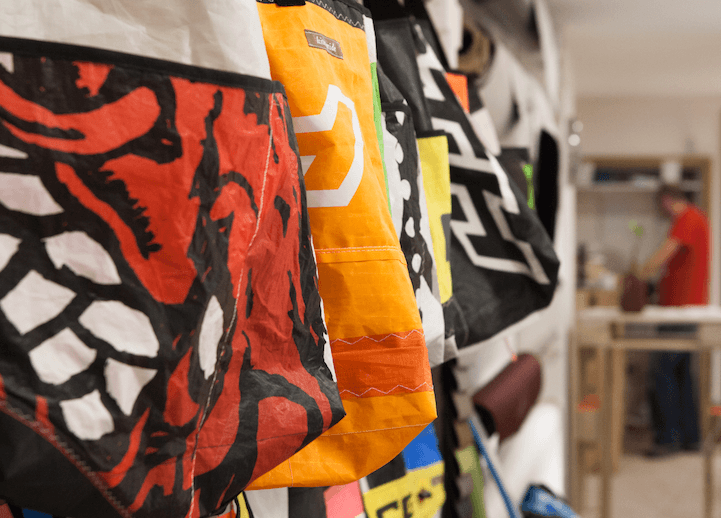

As in much of the Middle East and the world, human trafficking has become a crisis in Israel. An NGO study suggests at least 12,000 men, women and children identify as sex workers across the country. Of the men and women interviewed in this study, a clear majority wish to escape the industry – but the combination of financial debt, coercion by their employers and a lack of marketable job skills finds them stuck in a miserable cycle.
On that last point, a new social enterprise in Tel Aviv strives to give former sex workers the support, confidence and skills they need to start a new life.
The Swiss-Israeli nonprofit Glowbalact recently launched A.I.R. (Act-Inspire-Restore), a social enterprise that seeks to provide jobs to people who want to leave the sex trade and start new lives. TriplePundit toured the organization’s office last week to learn more about this initiative.
The stubborn fact is that escaping prostitution can seem almost impossible for many sex workers. But could projects like this succeed in other cities around the world as a tool to help people who have been traumatized by the double scourge of both human trafficking and the underground sex industry?
Matthias and Tabea Oppliger founded Glowbalact in 2011. (The play on the word “glow” means to have people touched by this program once again shine as they become part of society again.) Tabea became especially passionate about human trafficking in her native Switzerland, and its links to the country’s sex trade. Realizing that she wanted to do more than be appalled by the situation, she started to visit massage parlors and brothels in the Zurich area – and offered free massages to the women as both a gesture of kindness and to learn more about their situation. “Everyone told me I was crazy,” she said, “but remember that these are women who are touched in the most degrading way. And offering them a massage was a way to learn more about their situation.”
During a 2014 trip to Tel Aviv, Tabea was sitting outside her hotel waiting for her husband when a woman, who was walking with and being harassed by her pimp, suddenly approached her. The sex worker apparently recognized Tabea from Zurich, and wanted to sit and talk with her. After a long and tense conversation – the pimp sat with them and was obviously unhappy about the delay in business - Tabea never saw the woman again. But she became even more resolved to take action and that such a plan to address this problem would unfold in Tel Aviv. She and Matthias wrote a business plan, pitched their ideas to NGOs and relocated to Israel. A.I.R. has now been operating for six months.
A.I.R. now employs a team of six people in Tel Aviv, and has eight former sex workers who receive daily on-the-job training. A social services agency refers the workers to A.I.D. after it is clear these workers have expressed their desire to find a career and have stopped any substance abuse. They then receive training on a variety of skills, from sewing to woodworking.
“One of the biggest challenges these workers face is that when they search for a job, they somehow have to explain this big gap in employment,” Tabea told us. “One of our rolls is to fill that gap.”
One challenge A.I.R.’s staff faces is that the enthusiasm these workers may have far outpaces their confidence. But A.I.R. social workers teach them the basics about wood, fabric and furniture making. “Some of these people’s needs are so basic,” Tabea explained. “We had one worker who at first just didn’t seem to understand the basic concepts of sewing – and then we realized that the problem was she couldn’t see well as she needed eyeglasses.”
In addition, A.I.R. relies on on volunteers who are willing to come to Israel for a few weeks or, ideally, three months to volunteer -- whether they have a social work background or can help with skills training.
For now, the bulk of A.I.R.’s business is converting shipping pallets into furniture. The wood is reconfigured into benches, tables, chairs, dressers and shelves; cushions are upholstered with either fabric or vinyl salvaged from street banners that would have otherwise been discarded. The furniture is sold across Israel, and customers have included trendy coffee shops and guesthouses in Jerusalem and Tel Aviv. The day we arrived, A.I.R. and Glowbalact had just started another venture: travel bags of all sizes and bibs made by discarded sailed that had been attached to kitesurfing boards.
This venture has its share of challenges. A.I.R.’s managers need to be able to purchase materials at a price low enough to allow their venture to stay profitable and employ the people who need these opportunities the most. Some materials, such as unwanted street banners and sails, are donated. But the reliance on such supplies can always impose risks if there is a sudden demand. Nevertheless, Glowbalact and A.I.R. is a case study of how to renew the lives for those most shunned by society – and are often trapped in a vicious cycle that for many, is sadly often impossible to escape.
Image credits: Vibe Israel/Amit Shemesh
Editor’s note: Vibe Israel is funding Leon Kaye’s trip. Neither the author nor TriplePundit were required to write about the experience.
Four Economic Reforms that Can Save the Environment


By Geoffrey Heal
Our dependence on nature runs deep. There is no denying that a pristine environment improves our health, lengthens our lives and makes us more productive. Yet catastrophic environmental change will occur in our lifetimes thanks to four basic, correctable errors in the design of our economic systems. We can fix the most egregious flaws in the system to correct our neglect of nature and allow the economy and the environment to coexist and nurture one another.
External costs pose the biggest threat to the environment by preventing nature and the economy from working together. External costs occur when a third party must pick up the tab for the negative consequences of a transaction.
A transaction that occurs every day is a good example: Let’s say I buy gasoline, burn it in my car, and harm people who inhale the exhaust fumes or whose climate is altered by greenhouse gases generated. The people who are injured did not purchase and burn the gas — I did. Yet I do not pay for the harm done.
There are many ways of solving problems like this – problems that involve a social cost. We can levy a charge to reflect the costs to third parties; we can give damaged parties the right to sue; we can regulate activities that affect third parties, and more. What we can’t afford is to continue to ignore this harmful error in our economic policies.
The second most important problem with our economic policies is that property rights are not always clearly defined. The consequence here is dire. Valuable capital is actually destroyed or harmed. No one owns the fish in the sea, for example: They only become property once they are dead in the marketplace.
This lack of ownership leads to overexploitation, because no one has any incentive to conserve or manage the population. As a result, continuing the above example, many fish stocks have plummeted by 90 percent in the last half century. It’s not just that the number of fish has fallen. Small fish tend to mature faster and have a better chance to breed before being caught; they also have a better chance of escaping capture. Thus, natural selection has determined that we now have a diminished population of diminished fish. We are just beginning to fix this problem through systems of tradable quotas introduced in many fisheries, and they are working well.
A third problem is that the natural world provides services that are essential to our prosperity, but we don’t value them. Natural assets provide a stream of services over time, just as physical or intellectual capital goods provide a flow of benefits, which makes the natural world a form of capital.
Some of our most important and valuable assets are in fact natural capital, yet we generally don’t include them in our accounts or on our balance sheets. This means in particular that our accounts don’t reflect their depletion.
Take the case of fish stocks: These are an asset we are depleting, yet we don’t see this in any of our accounts. Accounts should warn you when you are running down your capital, but ours don’t.
We must change this, and it’s easy to do. In fact the United Nations, which sets the framework for the accounts of nations, has already put forth a roadmap for doing this. Several countries (but not the U.S.) are implementing it right now.
The fourth and final error in the way we run the economy concerns how we evaluate our economic performance. This is an area in which economists worship false gods. We use gross domestic product (GDP) as the standard, but it’s the wrong measure of economic performance.
GDP can go up when bad things happen, such as a hurricane or flood that necessitates rebuilding, and down as a result of good ones, such as the introduction of long-lasting light bulbs, which means that fewer are sold.
We shouldn’t rate ourselves by GDP growth, but by sustainable increases in human wellbeing. Better measures of economic performance are under development. We need to implement them and evaluate our performance ourselves by the results.
The world faces serious environmental problems. Maps are already being redrawn to reflect loss of landmass to rising seas, and nations are beginning to fail because of water shortages. The natural world is critically threatened by mismanaged human activity -- imperiling not only human populations, but also thousands of other species that call the forests and oceans home.
Now is the time to use the tools readily at hand to manage wisely. We need to use these tools broadly and boldly to rebuild a prosperous and sustainable world and end the threats to our prosperity engendered by our neglect of nature.
Geoffrey Heal is Donald Waite III Professor of Social Enterprise at Columbia Business School. He is a member of the National Academy of Sciences, and is Past President of the Association of Environmental and Resource Economists. This post is based on his latest book, Endangered Economies: How the Neglect of Nature is Threatening Our Prosperity, published by Columbia University Press.
Provocation and innovation at XEnergy


The National Lottery operator takes proactive approach to player safety
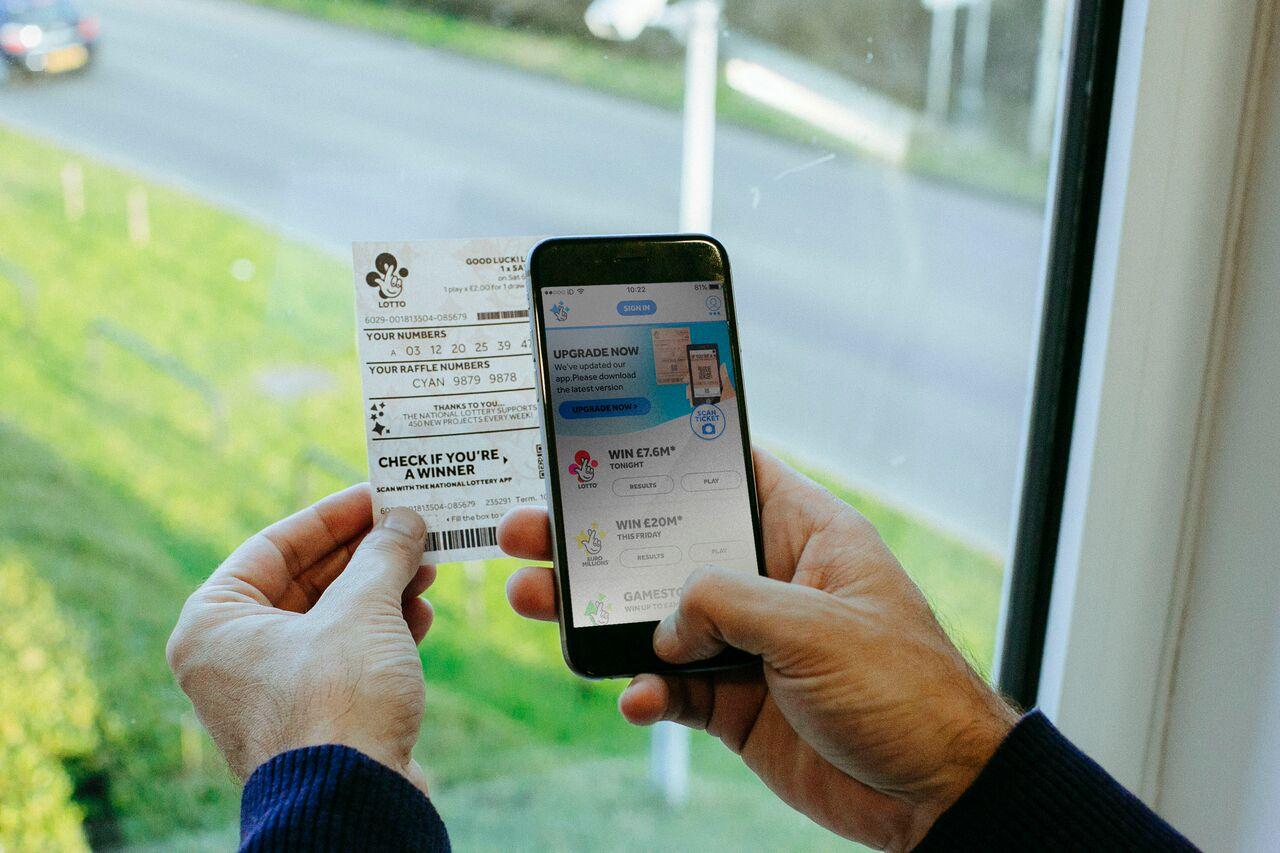

Innovative software tracks data to identify online problem play. Miranda Ingram reports . . .
As operator of The National Lottery, Camelot’s mission is to change lives. Both the lives of its winners – it makes almost 30 millionaires a month – but also the lives of people who benefit from the incredible £36 million that is delivered every week in Good Causes funding. Since The National Lottery began in 1994, players have raised over £35 billion for Good Causes – this means an average of 150 lottery grants in every neighbourhood have been awarded.
So it’s win-win? After all, watching The National Lottery draw on TV, ticket in hand, is a bit of harmless family fun. But with sales of lottery tickets and Scratchcards at an all-time high of £7.5 billion in 2015-6, is there a risk that people are spending more than they can afford?
“At Camelot, our strategy is all about lots of people playing a little, not a few people playing a lot,” says Alison Gardner, head of corporate responsibility at Camelot. “Our unique position as operator of The National Lottery comes with responsibilities for player safety – that’s why we choose to take a proactive approach”.
It’s also why, during the design process for a new game, Camelot uses tools that test how risky certain characteristics of a game could be for players and whether vulnerable or at-risk groups will be adversely affected. It also commissions expert research to give insight into the potential impact of new games on players, and then analyses the results of all this activity to see if a game poses a risk that’s above average. If it does, Camelot will take another look at the product or review other factors, such as its marketing strategy. But if the company is still not convinced, it won’t launch the game.
Another part of Camelot’s responsible play activity sits with the company’s network of?47,000 retailers. They are responsible for around 80% of National Lottery ticket sales, and Camelot is committed to training them how to spot and prevent underage play and potential problem behaviour. The company’s “Operation Child” scheme sends mystery shoppers – who are over 16 but look younger – into retail outlets to try and buy tickets without being challenged. An outlet that fails this test three times can have its lottery terminal removed.
But it is the growth of online gambling, where there is no face-to-face interaction, that provides the biggest challenge to responsible play. Camelot has a world-leading online platform with over eight million registered players. The company already closes down its gaming site overnight and online registration process involves an age-check by Experian.
But now Camelot has teamed up with the Cambridge-based Featurespace, world leader in Behavioural Analytics, to create a fascinating – and so far unique – pilot programme that allows it to monitor individual players, flagging up potential problem behaviours and allowing it to intervene early.
The Behavioural Analytics project started in 2013 and involved looking back through the company’s historical data to see if certain online players exhibited behaviour which might predict problem playing, explains Gardner.
“First, we had to identify what problem play actually looks like – there is no standard definition,” she says. “All our players can exclude themselves from certain games, even permanently. So we looked for people who had self-excluded from their online accounts, on the assumption that this was a sign they were playing too much and potentially had a problem.
“The next step was to monitor those players’ behaviour in the run-up to their self-exclusion to see if any common behaviours emerged. We identified 11 behaviours, which we then tracked and monitored in our data set to see if we could understand which of these behaviours predicted problems ahead.
“We found certain behaviours were more predictive of problems, but it was mainly a certain combination of behaviours which set alarm bells ringing.
“For example, an increase in the numbers of sessions played per week is a pretty obvious indicator. Less obvious is multiple card declines. Of course, cards can be declined for various reasons so this, in isolation, is not an indicator of problem play. But it could also mean people are trying to play with money they don’t have and, critically, may not be able to afford. Put the two behaviours together and you could be seeing the beginnings of a problem”.
Once the problem behaviours had been identified, Camelot ran a six-month programme using Featurespace algorithms. This ran from November last year to June 2016 and tracked player behaviours in real-time. This allowed it to categorise players as safe (“green” players); those displaying one or two problem behaviours (“amber” players); and those showing signs of problems (“red” players).
“It was the first time we had had such a depth of understanding of our players’ behaviours,” says Gardner. ‘We’d been identifying behaviours on a weekly basis – now we needed to decide what to do with our knowledge.”
Camelot developed a set of interventions to see if it could alter potential problem players’ behaviours at an early stage. “We’d send an email asking ‘are you worried about how much you are spending?’ with a link to self-help tools, or invite players to take a quiz to find out “what kind of player are you?” We developed six different interventions and divided our potential problem players into six groups, sending only one intervention to each group so that we could monitor its effectiveness”.
At the end of the six months Camelot contacted the players involved to ask if they remembered seeing the interventions. 60% did not, which means the interventions weren’t memorable enough, but the players surveyed nevertheless thought interventions were a good idea. ‘Most of the respondents believed it was up to themselves, not Camelot, to manage their behaviour, but importantly, they did appreciate prompts to remind them to play responsibly,’ says Gardner.
‘Earlier research had already showed us that people don’t like demanding or dramatic warnings – they respond better to softer and helpful messages like “maybe it’s time to take a break” or “why not go and have a cup of tea.?
“What’s really exciting about Behavioural Analytics is that now we can proactively target these messages to be a tangible help to players.”
Following the successful six-month trial, Camelot is now working on permanently embedding behavioural analytics, as well as further refining interventions to make them as effective as possible at averting potential problem play.
‘The great news is that only 0.5% of our instant win game customers came up as “red” players, and even our “red” players would probably come up as “green” on gambling sites,’ says Gardner.
Camelot is not the sort of company that attracts hardened gamblers. “For example, in bookmakers and casinos, there are machines where you can lose £100 in about 10 seconds,’ she says. ‘Responsible play is at the heart of everything we do – from the way we design our games to the tools we use to help put players in control.
“Our games are relatively low stake and they are not super quick, either. Also, we have daily and weekly limits on how many games you can play and how much money you can add to your account. The idea is that our games are fun to play, not addictive – as we don’t want players to spend more than they can afford.”
Camelot already has the highest level of Responsible Gaming accreditation by the World Lottery Association and was one of the first organisations in the UK to achieve GamCare accreditation for its interactive services.
Nevertheless, continually improving safety nets is good for Camelot, as well as good for players, says Gardner. ‘Continuing to innovate our player protection procedures gives our customers confidence. They are more likely to spend an extra couple of pounds on an instant flutter while buying their lottery ticket, for example, because they know we won’t let them get into trouble – and this acts as a guiding principle for all our games.
‘Plus, the fact that they know that a proportion of each ticket they buy – whether they win or lose – goes to Good Causes truly does make it a win-win for many National Lottery players”.
3p Weekend: Trump's Cabinet Looks Like a Bunch of Comic Book Villains


President-elect Donald Trump is systematically stacking his cabinet with people who oppose the very organizations they're tasked to run. Are we living in an alternate universe? This group must have one heckuva secret lair. It's probably already being built under Trump International Hotel in Washington, D.C., with a secret passage planned from the White House War Room.
Here's a line-up of the key players and their superpowers. While they plan to undermine most of the rules, regulations and safety nets that ensure a just society, we should keep an eye out for the superhero who will come to our rescue.
Secretary of State nominee Rex Tillerson
This will be the ExxonMobil CEO's first foray into working for the government. Of course, as CEO of one of the world's largest oil conglomerates, he's had plenty of experience traveling in "geopolitically complex" regions, namely to negotiate oil field access. That could be useful!
According to former Exxon executive Ali Khedry, as quoted in the Atlantic, “He’s going to go from running a $400 billion semi-sovereign — practically speaking — corporation to a $66 billion, quite dysfunctional, quite under-resourced bureaucracy.”
In addition to the Middle East, “you have places like Russia, Qatar, across Europe, across Asia, across Central and South America. Exxon has done business in all of those places, and I think that’s what [Trump]’s hoping the secretary of state will do,” Khedery said. Trump, he added in an email, “wants his cabinet to do deals around the world to advance American interests in what is shaping up to be a neo-mercantilist model.”
Superpowers: Warming the planet to dangerous levels with the click of a signature pen.
Department of Energy nominee Rick Perry
If confirmed, the former governor of Texas will oversee the organization responsible for the safety of the nation's nuclear material, nuclear reactor production for the United States Navy, energy conservation, energy-related research, radioactive waste disposal, and domestic energy production.
The DOE also sponsors more research in the physical sciences than any other U.S. federal agency. Since Perry has no experience whatsoever with nukes, his nomination is a bit of a head-scratcher.
Superpowers: Able to flip-flop egregiously without looking the slightest bit embarrassed. At a 2011 debate, he called for three government agencies to be eliminated: the departments of Education and Commerce, but he blanked on the third, eventually stating, "I can’t. The third one, I can’t. Sorry. Oops." It turned out to be the DOE. Oops indeed.
Environmental Protection Agency nominee Scott Pruitt
Oklahoma's attorney general made action against the EPA his life's work and spent much of his career suing the agency. On LinkedIn, he even boasts of being “a leading advocate against the EPA’s activist agenda."
While the agency's environmental and climate scientists nervously await their fate, Christine Whitman, head of the EPA under George W. Bush, had this to say to Grist: “I don’t recall ever having seen an appointment of someone who is so disdainful of the agency and the science behind what the agency does. ... It doesn’t put us in a good place, in my mind. And he’s going to have trouble within the agency if he does convey that kind of disdain to the career staff.”
Superpowers: LinkedIn profile writing; willful climate skepticism despite evidence in his own backyard.
Treasury Department Secretary nominee Steven Mnuchin
Mnuchin started his career at Goldman Sachs but left to create his own hedge fund. He then formed a bank called OneWest to buy the remains of IndyMac, a failed subprime lender, and Financial Freedom, a reverse mortgage lender.
Financial Freedom gained infamy for foreclosing on more than 16,000 reverse mortgages, almost 40 percent of all government-guaranteed reverse mortgage foreclosures, and more than twice what should be typical for a lender of this size. "Financial Freedom is the absolute worst," Sandy Jolley told CNN. She's a financial counselor who works with families who are fighting foreclosure.
Mnuchin's relevant experience seems to be his role as national finance chairman for Mr. Trump’s campaign. As a pick to head the Department of Treasury, Mnuchin will be responsible for overseeing the collection of taxes, duties, and money paid to and due to the U.S.; paying all bills of the U.S.; managing the federal finances; producing all currency; and supervising national banks! Fox guarding the hen house?
Superpowers: Picking winners! Mnuchin bankrolled the "X-Men" franchise and "Avatar," and was an early supporter of Trump for president.
Health and Human Services Secretary nominee Tom Price
Among Trump's picks, Price has the most experience working in the government sector. He's a six-term congressman from Georgia who can't wait to repeal Obamacare. He's also got his eyes set on radical changes to Medicare and MediCal, crucial and beloved health programs for seniors and low-income Americans respectively.
Superpowers: Experience in government; able to cut medical access for 120 million Americans in a single bound.
Education Secretary nominee Betsy DeVos
Betsy DeVos is chair of the Michigan Republican party; heir to the Amway fortune (through her husband); sister to Erik Price, founder Blackwater Horizon (the private military company whose employees were found guilty of killing civilian Iraqis in 2007); and is largely credited with dismantling Michigan's public school system, despite lacking professional or academic experience in pedagogy of any kind.
In 2014, the Detroit Free Press found that two-thirds of charter schools were run by private corporations and face little to no monitoring. An editor at the Free Press, Stephen Henderson, recently wrote: “This deeply dysfunctional education landscape — where failure is rewarded with opportunities for expansion and ‘choice’ means the opposite for tens of thousands of children — is no accident. It was created by an ideological lobby that has zealously championed free-market education reform for decades, with little regard for the outcome.”
DeVos will be responsible for policies related to federal education funding, distribution of the department's $73 billion budget, funding and monitoring their use, and enforcing federal laws prohibiting discrimination in schools.
Superpowers: Using ideology and profound preference for the marketplace to limit educational opportunities for children of all races, colors, religions and creeds.
Department of Labor Secretary nominee Andrew Puzder
The CEO of the holding company that owns the Hardee’s and Carl’s Jr. burger chains would be the top U.S. watchdog for workplace safety in Trump’s administration. All told, CKE Restaurant Holdings has been investigated and fined for hundreds of workplace safety and wage violations.
Puzder is a fast-food executive who has been critical of minimum wage increases as, of course, they'll hurt his bottom line. He's also a loud supporter of expansionary immigration and “amnesty” for the undocumented, since they make great low-level employees.
The Department of Labor fosters, promotes and develops the welfare of the wage earners. It is supposed to improve working conditions; advance opportunities for profitable employment; and assure work-related benefits and rights.
Superpowers: Pissing off both the left (for his critiques of minimum wage and obvious disregard for worker well being) and the alt-right (for his vocal support of amnesty for immigrants).
Housing and Urban Development Director nominee Ben Carson
A retired pediatric neurosurgeon and former presidential candidate, Carson ran on a platform of government cutbacks, which makes this an odd appointment. HUD funds affordable housing, including $1.2 billion per year to the city of New York, where over 400,000 people rely on affordable housing funded through HUD.
The New York Times had this to say about his appointment: "With no experience in government or running a large bureaucracy, Mr. Carson, 65, publicly waffled over whether to join the administration [before taking this role.] He will oversee an agency with a $47 billion budget, bringing to the job a philosophical opposition to government programs that encourage what he calls 'dependency' and engage in 'social engineering.'”
Superpowers: This guy was a legit superhero of a pediatric neurosurgeon. He performed the only successful separation of Siamese twins joined at the back of the head, and pioneered the first successful neurosurgical procedure on a fetus inside the womb. If only he stuck to his strengths.
We should also mention that these guys are all super rich. They've got over $9.5 billion in combined weath, more than the 43 million least wealthy American households combined! Now wealth doesn't necessarily mean villian status, but it does mean being out of touch with the needs of the average American -- and the superpowers above prove it. This is a collection of villains fit for a Marvel franchise, don't you think? Maybe we can get Steven Mnuchin to option the movie rights.